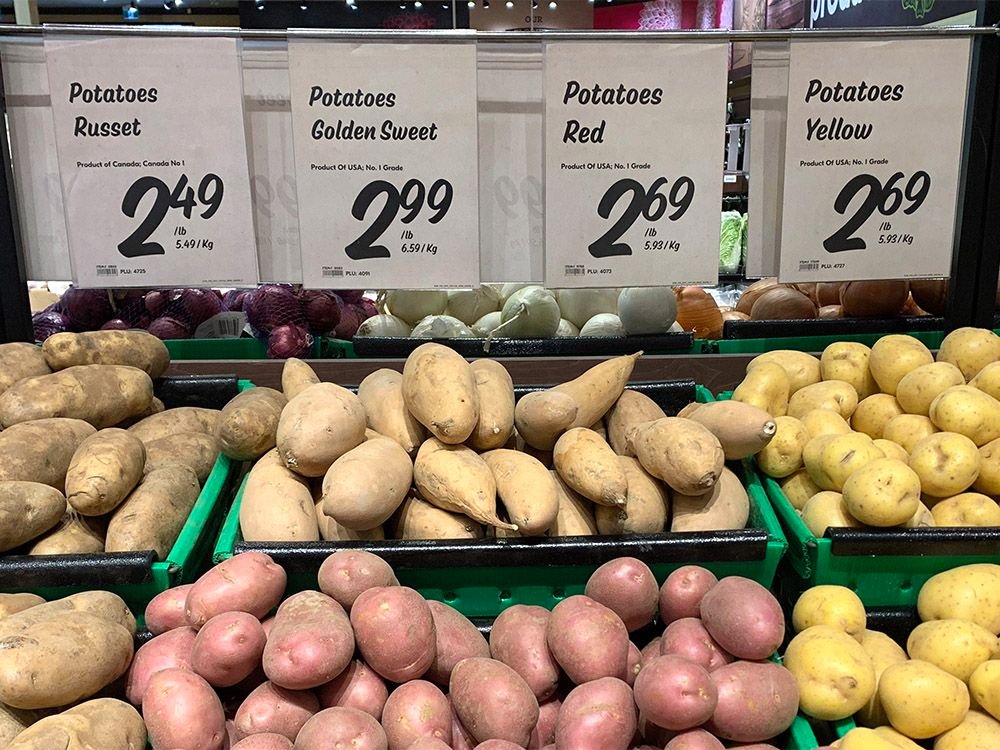U.S. President Donald Trump’s 30-day pause on threatened tariffs hasn’t stopped Canadians from fighting back, with many resolved to boycott American goods in favour of local products. Read More
Trump’s tariff threat has Canadians ready to pivot to shopping local. But how realistic is that?
Article content
Article content
The app, currently only available on iOS platforms, launched on February 3 and is free to download. To identify if a product is local, users can type in the name of the product, or scan its UPC code, and using AI programming, the app will identify where it comes from and whether there are local or international substitutes for it.
Article content
Article content
Over 100 people have downloaded the app since its release, Checora said, and she has received positive feedback from users online.
Article content
Article content
She has even found it useful for herself. “I was making a Kahlua cow and I thought to check and see (if there are any local alternatives) even though I know it’s a Mexican liquer,” she said, adding that she was surprised to find there are Canadian alternatives available.
Article content
Article content
Her son is currently creating a version for Android users, to be ready for use in a couple of weeks.
Article content
Article content
The app does come with a disclaimer, she said, warning users that AI programming isn’t always the most accurate and to not base important decisions solely based on what information the app provides.
Article content
Advertisement 5
Story continues below
Article content
Article content
How do I read product labels at stores?
Article content
Article content
Shoppers wanting to express their support against the U.S. tariffs, will want to look for the following labels:
Article content
Article content
“Local”: This means the product is produced or sold in the same province, or within 50 kilometres of the originating province of territory.
Article content
Article content
“Product of Canada”: Atleast 98 per cent of the total costs of producing the product has been incurred in Canada.
Article content
Article content
“Made in Canada”: The product had its last “substantial transformation” in Canada, but only 51 per cent of its total direct costs of production are required to be incurred in Canada. Which means the product could be a mix of domestic and imported ingredients.
Article content
Article content
If a product is 100 per cent Canadian, it can say that. If it is labelled as being “Canadian”, then shoppers can consider it the same as having a “Product of Canada” label.
Article content
Article content
All food manufactured outside of Canada must clearly state that it is “imported for” or “imported by” to indicate its origins. The label must also include the name and address of the foreign manufacturer or the Canadian company that imported the product, as well as the product’s country of origin.
Article content
Advertisement 6
Story continues below
Article content
Article content

Article content
Article content
How are small businesses impacted?
Article content
Article content
Beaudoin has been in conversations with other small business owners ever since the news of the tariff dropped. While it is encouraging to see more conversation on supporting local products, it’s disheartening to see the talk focus on the nature of products sold by national conglomerates.
Article content
Article content
“It’s a little disheartening when the national conversation is where to buy Heinz or French ketchup, which, if you look at the trickle down, are not super local,” he said. “They’re not super Canadian brands … they don’t necessarily need the support
Article content
Article content
He stresses the need for the conversation to switch to focusing on local economies in their respective cities. “It’s more about large national brands rather than small business.”
Article content
Article content
While the tariffs may sway some people towards buying local, it comes down to the price difference between local and international as well as people’s preferences, Bijvank said.
Article content
Article content
“There will always be a group of people that prefer fresh products being made locally, but they are more expensive,” he said. “If the prices become close towards each other, once the tariffs are taken into effect, then that might sway a small fraction of the consumers, but I don’t think that’s going to make that much of an impact.”
Advertisement 3
Discover more from World Byte News
Subscribe to get the latest posts sent to your email.




